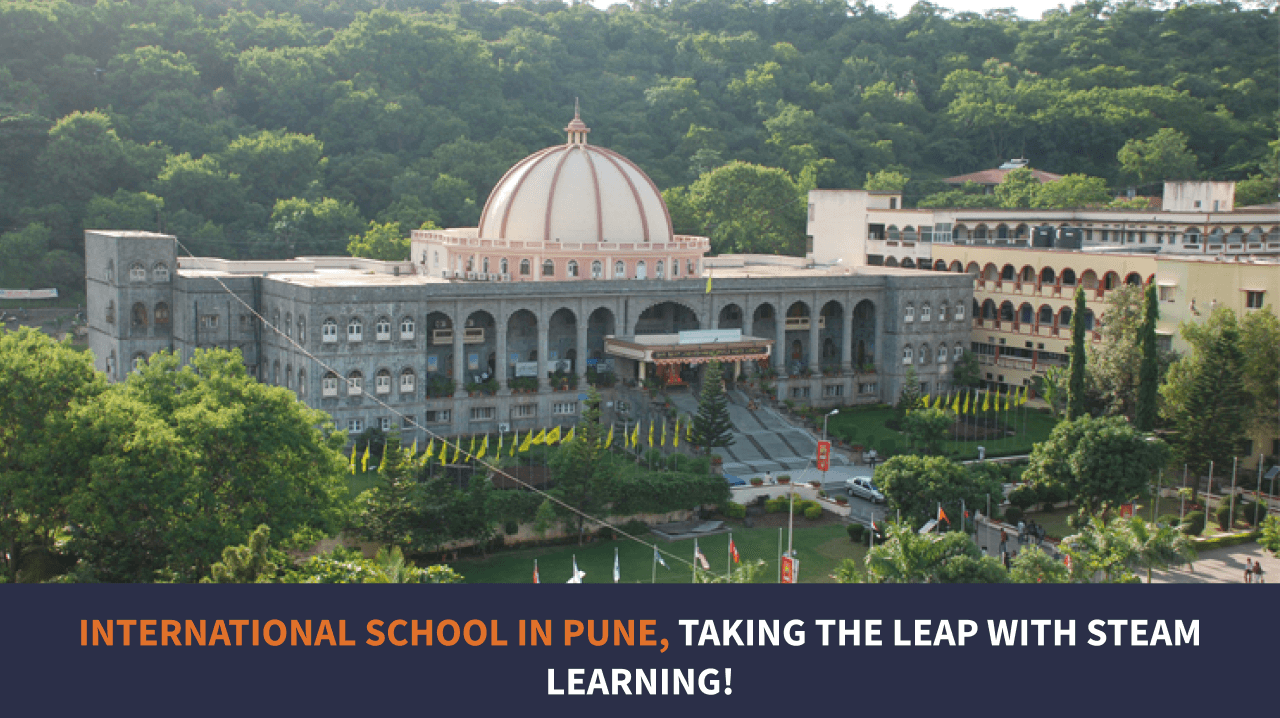International School in Pune, Taking the Leap with STEAM Learning!

Today, we belong to an ever-evolving era of technology. Because of the impact of technology, the learning environment is rapidly getting more and more advanced. So, it has become really important for us to get our kids ready for tomorrow. While learning and education are slowly experiencing a digital transformation, a 360-degree approach to holistic learning has become necessary for students.
Lately, there has been a convergence of innovation, technology, academics, and creativity, which demands higher skills and abilities among the kids. Addressing this convergence, the IB schools in pune have adopted the STEAM initiative of learning. This initiative not only makes the students ready for the dynamic world but also offers them a much-needed competitive edge. So, here’s a look at what STEAM learning is all about and how beneficial it is for the students.
What is STEAM education?
STEAM education is an educational approach that uniquely combines Science, Technology, Engineering, Art, and Maths to allow the students to engage themselves in a highly interactive learning experience. As a part of the STEAM curriculum, the best Residential Schools in Mumbai create an environment where students not only acquire knowledge of the subjects individually but also craft solutions to problems based on their observations of real-world scenarios.
STEAM learning encourages students to work on their critical understanding capabilities, analyse problems effectively, and think of out-of-the-box solutions to create innovations. STEAM also helps the students in becoming creative leaders of tomorrow by further broadening their perspective. Nowadays, STEAM learning is also being used to develop a sense of collaboration in the minds of the students so that they can work on their team-building skills.
Factors in STEAM:
Here are the 5 major components of the STEAM approach to education:
Science: Science is one of the most crucial components of STEAM education. It allows the students to acquire a clear understanding of the different natural phenomena that are occurring around them. The study of Science makes the students familiar with the different laws of Biology, Physics, and Chemistry. They get to conduct different types of experiments based on real-life scenarios and collect data from the same. They also get to analyse the data and draw conclusions from the observations made during the experiment.
Technology: Technology is the tool that allows students to apply their knowledge to solve problems conveniently. In STEAM-based learning, students get to understand the importance of technology in learning. They use technology to perform different experiments and acquire valuable insights from the same. The students also use technology to exchange ideas among themselves. As a part of STEAM education, the students are also taught about emerging technologies like Robotics, 3D Printing, Artificial Intelligence, etc.
Engineering: The science of engineering is all about designing Innovative solutions to real-life problems. Engineering is mainly used to bridge the gap between science and technology. It provides the students hands-on learning experience. It is because of engineering that we see so many innovative things being developed at different corners of the planet. Engineering also helps students develop their critical thinking abilities and their analytical skills. They are also able to develop a new perspective.
Art: Art is another essential component of STEAM education. It helps bring out creativity and imagination in students. Art is a unique blend of dance, music, drama, and visual arts. It provides the students the opportunity to express themselves and communicate effectively with one another. Students also acquire an appreciation of the beauty around them. They are able to pen down their thoughts more effectively with a proper knowledge of art
Maths: Mathematics takes care of the quantitative aspects of STEAM education. It offers the students the necessary skills required to solve problems, analyse data, and make well-informed decisions for themselves. Maths exposes the students to various problem-solving activities, which further compels them to think logically. Students are also able to apply the concepts of mathematics to solve various problems occurring around them.
What are the benefits of STEAM education?
There are multiple benefits associated with STEAM education:
STEAM learning helps children develop critical thinking abilities:
STEAM learning is an integrated form of learning that allows students to look at problems from different perspectives. It allows them to analyse the problem from various viewpoints, which, in turn, has a big role to play in improving their critical thinking abilities. The students are also able to evaluate the different approaches to solving a problem and come up with the solution which they think is most appropriate for the problem.
Students get to practice their soft skills:
While working on STEAM projects, the students get to hone their soft skills. This includes listening, creativity, task management, and empathy. Working on their soft skills allows the students to become more appropriate for the present-day world. They are also able to separate themselves from the crowd. The tools used to impart STEAM skills are mostly collaborative and adaptable. They can be used as per the exact needs of the children and offer them a better learning experience.
STEAM fosters creativity in kids:
STEAM education encourages the students of today to think out of the box and come up with innovative solutions to problems. By integrating art with science and technology, kids are able to experiment, innovate, and come up with creative solutions to real-life problems. They are able to make proper analysis of data and come up with patterns for the same. The students also get to ask insightful questions as a part of their curriculum STEAM training session.
A collaborative atmosphere is maintained:
STEAM projects mostly follow a collaborative approach. These projects require the students to work together in teams. This helps them share their ideas and make effective communications. In this way, the students are able to strengthen their team-building abilities and work on their communication skills. This again increases engagement and motivation among the students. They are able to take part in various hands-on activities.
So, if you are willing to make the most out of STEAM learning, then it is high time that you get your kids admitted to MIT Gurukul and allow them to build a highly prosperous future for themselves.

